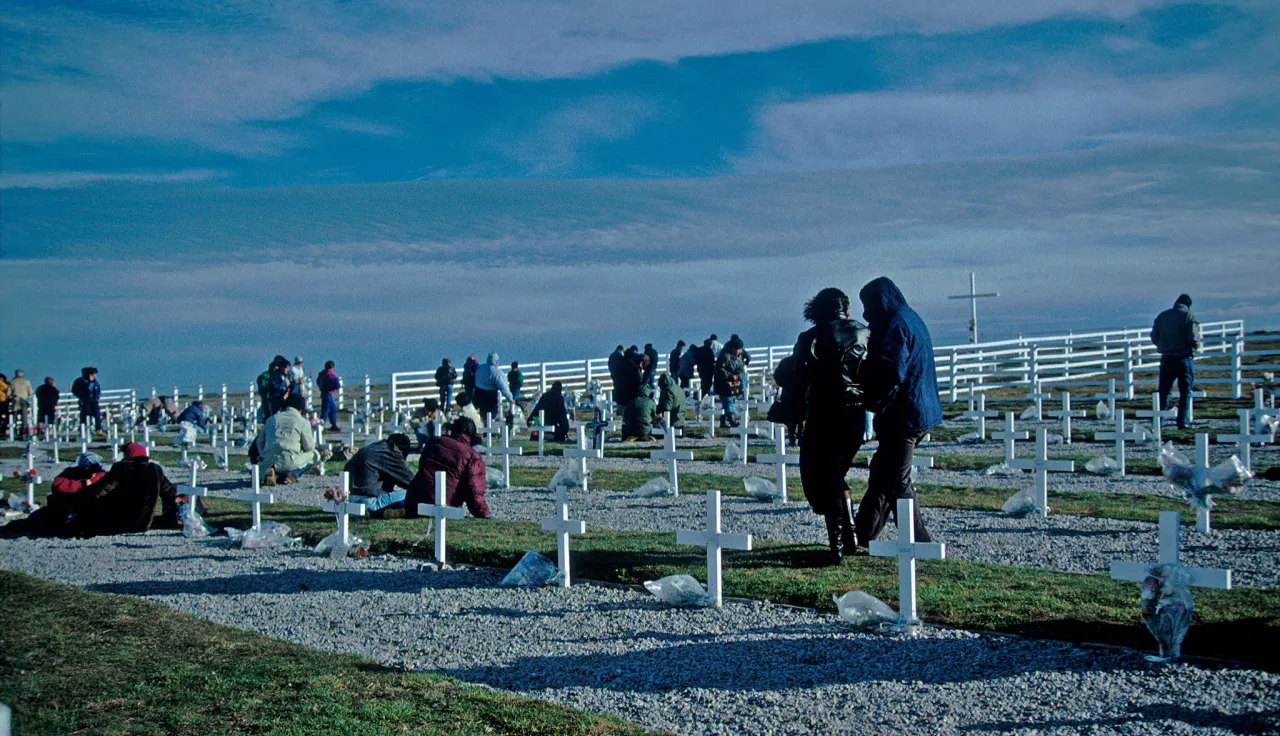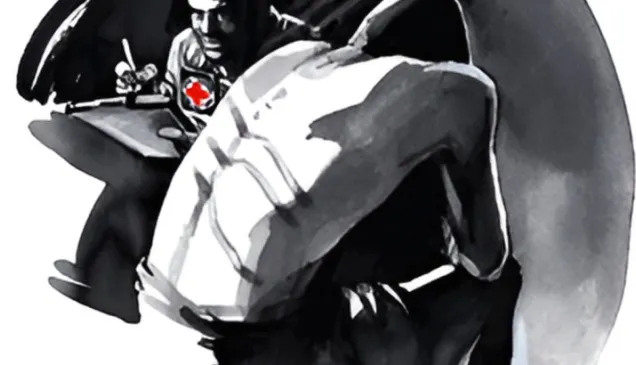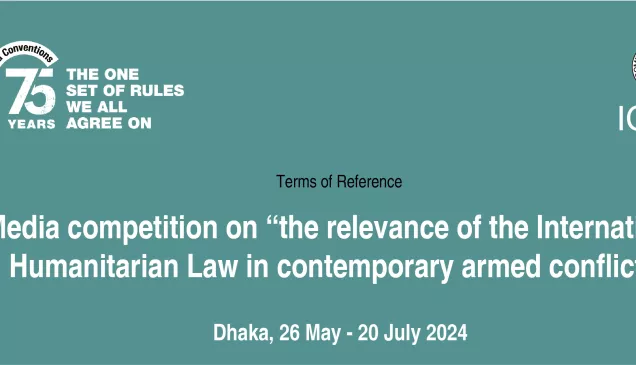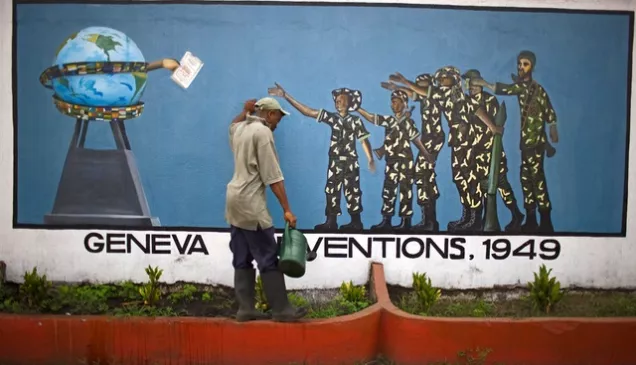Falklands / Malvinas: The ICRC’s role, 30 years on

2 April 2012 is the 30th anniversary of the start of the conflict between Argentina and the United Kingdom over the Falklands/Malvinas. Edmond Corthésy was head of the ICRC's Buenos Aires delegation at the time. He recalls the work of the ICRC during and after the conflict, and especially the services it provided to prisoners of war.
 What was the focus of the ICRC's work during the South Atlantic conflict?
What was the focus of the ICRC's work during the South Atlantic conflict?
Our main activity was to visit prisoners of war, on land and at sea.
We had access to all prisoners held in Port Stanley / Puerto Argentino, including senior officers, such as the commander-in-chief of the Argentine armed forces in the Falklands / Malvinas.1 We also visited and registered some 500 officers held on board a ferry, the St Edmund, where one of our delegates remained until the last prisoner was freed in July 1982. In addition, the ICRC paid several visits to a British pilot captured in combat, who had been transferred to the mainland and was being held at an air base in north-eastern Argentina, near La Rioja. The pilot was later transferred to Montevideo, Uruguay, under the auspices of the ICRC, and handed over to the British authorities.2
During our visits, we registered the prisoners and recorded their personal details. Of course we also monitored their health and their conditions of detention.
From May to July 1982, we registered over 11,000 Argentine troops captured by British forces. We filled out forms on each person, in compliance with the Third Geneva Convention, and provided copies to the Argentine authorities.
The ICRC also facilitated various prisoner-release operations, some during the hostilities and others afterwards.
Did you take part in any of those operations yourself?
Yes, at the end of the conflict, when more than 4,000 prisoners of war arrived in Puerto Madryn, Argentine Patagonia, on board a British ship. I flew to Madryn from Buenos Aires at the end of June, using a helicopter provided by the Argentine armed forces. On board the ship, I spoke with both British officers and Argentine soldiers. We had to complete the registration process as the prisoners began to disembark, as we had not been able to collect all the necessary details on the islands.
The ICRC's role in such situations is that of a neutral intermediary. In Argentina, we facilitated contacts between the parties to the conflict and organized the handover of prisoners of war to the Argentine government. Under the 1949 Geneva Conventions, all parties to a conflict – in this case Argentina and the United Kingdom – must free their prisoners without delay once the active hostilities are over.
What else did the ICRC do?
On the day hostilities broke out, the ICRC sent a note to the parties reminding them of their obligations during international armed conflicts, under the four Geneva Conventions of 1949.
The delegation in Buenos Aires kept in constant touch with the Argentine Ministry of Foreign Affairs and the joint chiefs of staff of the Argentine armed forces in order to deal with any humanitarian problems arising in connection with the conflict, such as access to the conflict zone, the notification and identification of hospital ships and the exchange of prisoners of war and wounded. ICRC headquarters maintained close relations with the permanent mission of the United Kingdom in Geneva and the various ministries concerned in London.
From the outset of the conflict, the two countries demonstrated their commitment to comply with international humanitarian law.
For instance, both parties invited the ICRC to visit the six hospital ships that were active during the conflict, enabling us to make sure that each was clearly identifiable, in conformity with the Second Geneva Convention.
The conflict in the South Atlantic was the first time that the Second Geneva Convention, relative to conflict at sea, was implemented. At the direct request of the Argentine authorities, I personally visited the Bahía Paraíso in Buenos Aires before it sailed for the conflict zone.
ICRC delegates first reached the islands aboard a British hospital ship on 10 June. They had intended to set out earlier from Patagonia but that unfortunately proved impossible owing to various problems related to the conflict.
One of the reasons we wanted to go to the islands was to facilitate the setting up of a neutral zone, as defined in the Geneva Conventions. A perimeter was established around the church in Port Stanley where civilians could take refuge if fighting broke out in the capital. This was fortunately not the case and the war soon ended.
ICRC delegates served as neutral intermediaries between Argentina and the United Kingdom during negotiations over the establishment of the zone. The two sides reached an agreement in writing, in conformity with the Conventions, a rare occurrence in the history of international humanitarian law.

Port of Montevideo, Uruguay. The British hospital ship HMS Hecla, marked with the Red Cross emblem. The war in the South Atlantic was the first time the Second Geneva Convention protecting armed forces at sea was applied. [v-p-fk-d-00001-03 / CC BY-NC-ND / ICRC / L. Chessex]
In 1991, the families of Argentine soldiers killed in battle went to the islands for the first time, under ICRC auspices, to visit the military cemetery in Darwin. Why did the ICRC decide to facilitate the visit?
The families had asked the ICRC to facilitate the visit and we encouraged the parties to allow the visit to take place as means of aiding the grieving process for the families. It was a humanitarian issue.
It took several months to obtain the agreement of the two sides regarding the details, with the ICRC acting as neutral intermediary.
Over 300 people made the journey, in an Aerolíneas Argentinas 747 chartered by the Argentine government. The British side provided a number of helicopters to fly the passengers from the airport to Darwin, on the opposite side of the island.
This was the site of the graves, bearing the names of the dead soldiers. In addition, there were many graves containing unidentified remains. Our team included three psychologists, who were there to help the families through this difficult and highly emotional experience.
Even though negotiations for the visit had begun a long time previously, it didn't take place until almost ten years after the conflict. It was an important, highly emotional occasion, and from the comments and thanks we received from the families when they got back, the experience had helped them.
On 18 March 1991, some 10 years after the war had ended, 358 relatives of fallen Argentine soldiers visited the graves of their relatives on the islands, under the auspices of the ICRC.
Today, the ICRC continues to issue prisoner-of-war certificates to ex-servicemen seeking recognition of their pension entitlements.
See our photo gallery (Spanish only): Conflicto Falklands/Malvinas, 30 años después: la labor del CICR en imágenes
During the conflict, the ICRC:
- visited and registered 11,692 prisoners of war;
- delivered 800 Red Cross messages;
- carried out preventive activities on the mainland and on the islands;
- deployed a team of 11 expatriates, including three doctors, who worked with local employees in Buenos Aires and delegates in Geneva.
Notes:
1. The title "Falklands / Malvinas" corresponds to ICRC policy: when a disputed territory is given different names by the parties concerned, the ICRC uses those names together, in French alphabetical order, as it is not our task to choose between them.
2. A number of British troops and civilians who had been captured by Argentine armed forces at the beginning of the conflict were handed over to the British authorities in Montevideo. Although the ICRC was concerned about the fate of prisoners of war from the start of the conflict, it did not take part in the repatriation operations.



